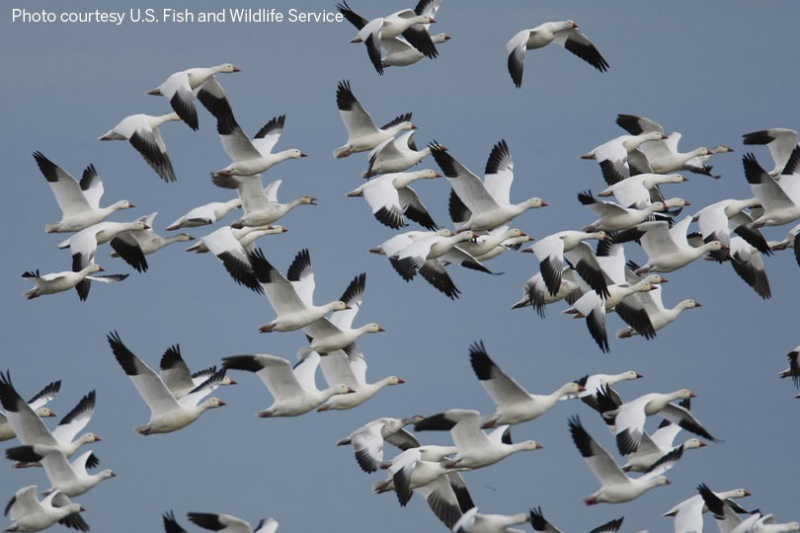By Jessica Domel
Multimedia Reporter
The Light Goose Conservation Order will remain in place in Texas for at least another year.
On Jan. 25, Texas Parks and Wildlife Department (TPWD) staff briefed the Parks and Wildlife Commission on proposed changes to hunting and fishing regulations for the upcoming season.
The recommendation to close the Light Goose Conservation Order was not included in those changes.
“After additional discussions with staff and input from our constituents, we have decided to delay any staff recommendations on the conservation order,” Shaun Oldenburger, TPWD small game program leader, told the commission. “Basically, there are some other options that warrant further discussion at both our technical and advisory committees.”
Oldenburger discussed the initial proposal to close the Light Goose Conservation order during a preview of proposed hunting season changes at the commission’s November meeting.
At the time, he said the conservation order is not accomplishing what it was designed to do.
The conservation order was enacted in the 1980s due to concerns that increasing populations of light geese in staging and breeding areas in Manitoba, Canada could lead to an ecological collapse there.
The order, which is a special amendment to the Migratory Bird Treaty Act, allows the U.S. Fish and Wildlife Service (USFWS) to authorize states, like Texas, to give hunters additional opportunities to hunt light geese outside of the regular hunting season.
The thought at the time was that if hunters were able to take more adult light geese, they could help control the goose population.
“This is not an established hunting season,” Oldenburger said. “Since it is a management tool, that’s why there are different regulations with method of take and hunting hours.”
Oldenburger said in November that looking back, scientists underestimated the light goose population because it was difficult to inventory them at the time.
He said experts also probably underestimated how many geese could successfully survive in the breeding and staging area in Manitoba.
Knowing that, and seeing that the order did not reduce the light goose population, TPWD staff initially recommended closing the Light Goose Conservation Order in Texas.
At this most recent meeting, Oldenburger said TPWD staff will discuss other options that may be taken.
“Additionally, we would like to develop educational materials and presentations to inform our constituents as to the reasoning for potentially looking at changes or elimination of this management tool,” Oldenburger said.
At the commission meeting, Oldenburger presented a proposed change to the Harvest Information Program (HIP) designed to ensure the program continues to gather high-quality data.
The public is invited to comment on the proposals.

